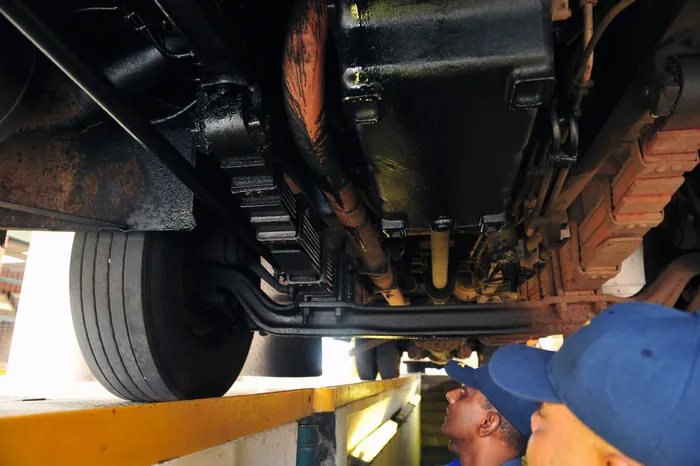Alarming 63% of vehicles failed a free inspection of safety-critical components

Even free vehicle safety inspections garner little interest from South Africans.
Image: Boxer Ngwenya / Independent Media.
Unroadworthy vehicles are a significant contributor to South Africa’s unacceptably high accident rate, with some sources indicating that vehicle condition is a factor in up to 15% of crashes.
With around 13,000 road deaths recorded on our roads annually, South Africans should be paying far greater attention to the condition of their vehicles, particularly in the run-up to the December holidays.
The Retail Motor Industry (RMI) notes that not only was there a disappointing turnout during its recent campaign, which offered free safety checks at dozens of its accredited testing stations across the country, but the failure rate was alarmingly high.
Of the 101 safety inspections that were carried out, which focused on safety-critical components such as brakes, tyres, suspension, and lights, 63.02% of vehicles did not make the grade. Think about that for a minute - these were the vehicles of owners who actually cared enough to bring their vehicles in for inspections.
While this is an admittedly small sample, a study by Verster and Fourie (2017) estimates that as many as 1 million vehicles operating on South African roads may be un-roadworthy.
“This year we ran a campaign just before Easter through our VTA testing stations. It was very concerning to see that, despite widespread communication and the clear benefit of free vehicle assessments, participation was disappointingly low. This raises serious concerns about ongoing vehicle neglect and its consequences,” said RMI CEO Ipeleng Mabusela.
He said safety has to be a non-negotiable.
“A small investment in maintenance and safety checks can prevent a catastrophic accident.
“While accidents are typically attributed to driver behaviour or environmental conditions such as road and weather, vehicle-related factors like faulty brakes, worn tyres, poor suspension or ineffective wipers are often overlooked,” Mabusela added.
Tyres are the only point of contact between a vehicle and the road, and worn tread, incorrect pressure or mismatched tyre sizes significantly increase the risk of an accident, particularly in wet conditions.
Faulty brakes are another silent hazard that can lead to devastating outcomes.
While it is always best to get your vehicle inspected by a professional - particularly since many reputable outlets do conduct free safety checks leading up to the December holidays - there are a few safety checks that motorists can do themselves, depending on their level of expertise.
Here’s how to get your car ready for the December road trip
Periodic testing should be compulsory
At present, only vehicles that are used for ‘reward’ are required to be tested for roadworthiness on a regular basis. For taxis and trucks, this is required to take place annually, and every six months in the case of buses.
Currently, private vehicles, which account for around 79% of the vehicles on our roads, are only required to be tested after a change of ownership.
The Department of Transport (DOT) has yet to publish a date for the implementation of periodic testing for private vehicles, even though regulations were put in place as far back as 2014. The amendment to “Regulation 138” stated that all vehicles that are 10 years of age or older would be required to undergo roadworthy testing every two years. The amendment has yet to be gazetted.
“Every accident avoided is a life saved, a family spared, and an economy protected,” Mabusela concluded. “This Transport Month, let’s put safety first.”
Get your news on the go. Download the latest IOL App for Android and IOS now
IOL Motoring
Related Topics: